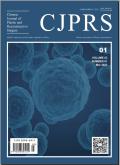Two decades of myelomeningocele defect reconstruction: Insights and outcomes from a single center
Chinese Journal of Plastic and Reconstructive Surgery
Pub Date : 2025-06-01
DOI:10.1016/j.cjprs.2025.03.001
引用次数: 0
Abstract
Background
Numerous reconstruction methods have been developed for myelomeningocele defects; however, no published reports have been published on the preferred reconstruction method in Malaysia. This study reviewed reconstruction techniques and outcomes in patients with myelomeningocele at our center.
Methods
A retrospective study was conducted on reconstruction methods and outcomes in patients with myelomeningocele referred to the Plastic and Reconstructive Unit, Hospital Universiti Sains Malaysia (HUSM), Kelantan, for wound coverage from to 1997–2023. Data on patient demographics, defect size, reconstruction methods, operation duration, flap-related complications, and secondary repairs were collected and analyzed.
Results
Thirteen patients were identified in this retrospective study, comprising 5 female patients, 7 male patients, and 1 ambiguous gender patient. Wound closures were performed using primary closure method, local flaps, or regional flap closure. Nine (69.2%) of the thirteen patients underwent soft tissue reconstruction using the local flap, three (23.1%) underwent primary closure, and only one (7.7%) patient underwent wound closure with a regional flap. Flap-related complications were observed in four of the thirteen patients, including wound breakdown in two cases and partial flap necrosis in two cases. Of these four patients, secondary repair was required in three: split-thickness skin grafting was performed in two, and primary closure in one. The remaining patient was managed conservatively with dressings. Patients were followed up for a mean duration of 56.6 (±62.4) months, and complete healing was achieved in all cases.
Conclusion
Myelomeningocele repair remains challenging, and a multidisciplinary approach is recommended. We demonstrated various local and regional flap closure methods with good outcomes. Reconstruction techniques should be tailored for individual cases based to the surgeon expertise.
二十年脊髓脊膜膨出缺损重建:来自单一中心的见解和结果
脊髓脊膜膨出缺损的重建方法有很多;然而,没有关于马来西亚首选重建方法的已发表报告。本研究回顾了我们中心脊髓脊膜膨出患者的重建技术和结果。方法回顾性研究1997-2023年在吉兰丹州马来西亚圣斯大学医院整形与重建科就诊的脊髓脊膜膨出患者伤口覆盖的重建方法和结果。收集和分析患者人口统计学、缺损大小、重建方法、手术时间、皮瓣相关并发症和二次修复的数据。结果本研究共纳入13例患者,其中女性5例,男性7例,性别不明确1例。伤口闭合采用初级闭合法、局部皮瓣或区域皮瓣闭合。13例患者中有9例(69.2%)采用局部皮瓣进行软组织重建,3例(23.1%)采用初级缝合,只有1例(7.7%)采用局部皮瓣进行伤口愈合。13例患者中有4例出现皮瓣相关并发症,包括2例创面破裂和2例皮瓣部分坏死。在这4例患者中,有3例需要进行二次修复:2例进行了裂厚皮肤移植,1例进行了初步闭合。其余患者保守处理敷料。随访时间平均56.6(±62.4)个月,全部病例均完全愈合。结论脊髓脊膜膨出的修复仍然具有挑战性,建议多学科联合治疗。我们展示了各种局部和区域皮瓣闭合方法,效果良好。重建技术应根据外科医生的专业知识为个案量身定制。
本文章由计算机程序翻译,如有差异,请以英文原文为准。
求助全文
约1分钟内获得全文
求助全文
来源期刊

Chinese Journal of Plastic and Reconstructive Surgery
Surgery, Otorhinolaryngology and Facial Plastic Surgery, Pathology and Medical Technology, Transplantation
CiteScore
0.40
自引率
0.00%
发文量
115
审稿时长
55 days
 求助内容:
求助内容: 应助结果提醒方式:
应助结果提醒方式:


